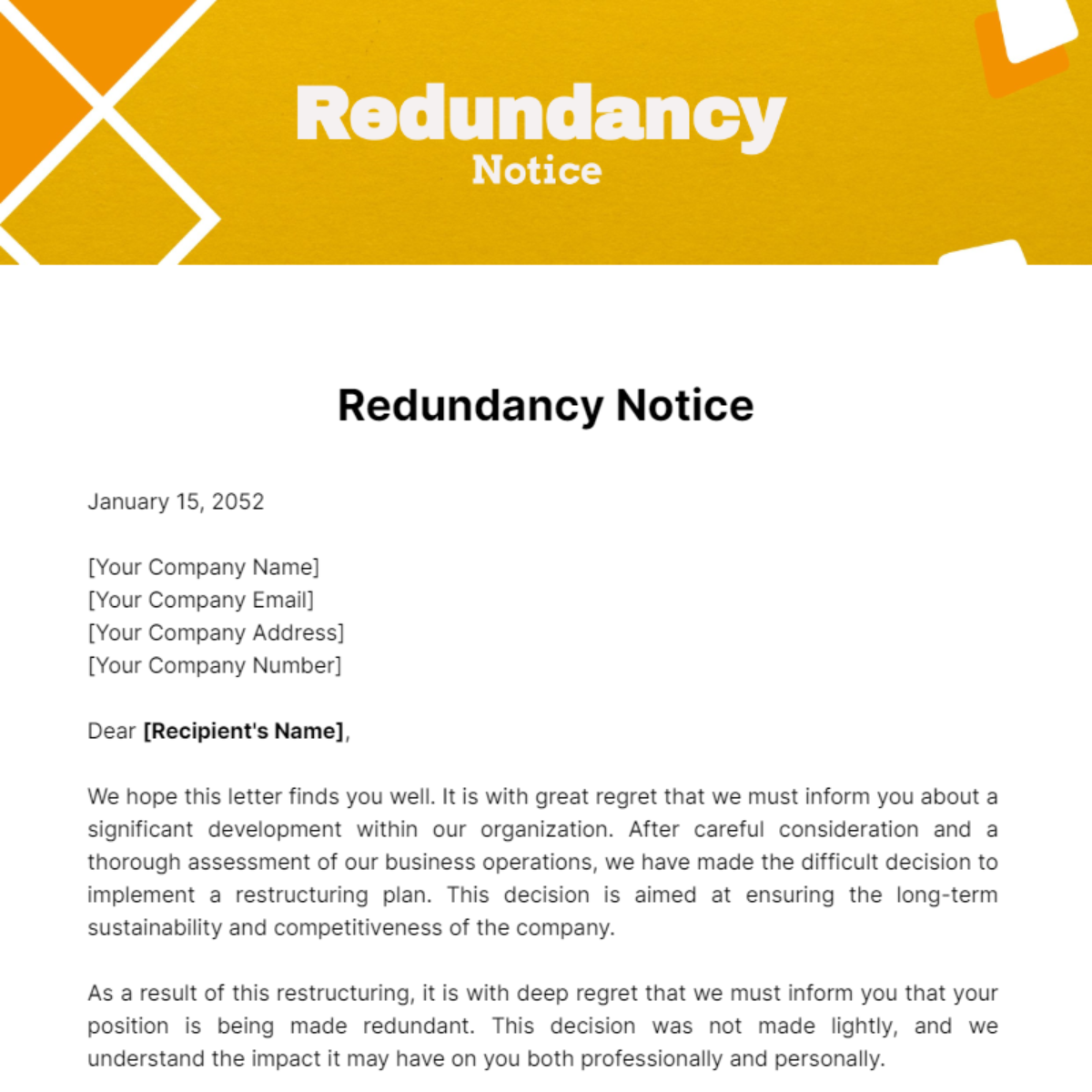Explained: If a Company Goes Bust Who Pays Redundancy in the UK?
Explained: If a Company Goes Bust Who Pays Redundancy in the UK?
Blog Article
Checking Out the Interplay Between Firm Redundancy and Business Flexibility for Future Growth
In the vibrant landscape of today's company world, the intricate relationship in between firm redundancy and organizational flexibility emerges as an essential aspect for continual growth and success. Companies frequently deal with the obstacle of striking a fragile equilibrium in between maintaining a degree of redundancy to minimize risks and cultivating flexibility to respond swiftly to the ever-evolving market demands. This delicate interplay holds the vital to not only surviving in stormy times however also flourishing when faced with uncertainty. As we discover the diverse measurements of this interaction, fascinating insights into how companies navigate these complexities to pave the way for future growth await.
Importance of Firm Redundancy
Firm redundancy is a crucial aspect that boosts organizational resilience and alleviates functional risks. By incorporating redundancy actions within the organizational framework, business can better hold up against unanticipated disruptions and variations in business atmosphere. Redundancy works as a tactical barrier, allowing business to adjust and react effectively to unanticipated challenges without compromising vital operations.
One key aspect of the significance of firm redundancy is its role in making certain connection throughout times of crisis. When encountered with unexpected adjustments or emergencies, repetitive systems, resources, or employees can tip in to keep vital functions and prevent extensive disturbances. This continuity not just safeguards the business's track record and client count on yet additionally minimizes financial losses and operational downtime.

Methods for Business Adaptability

Developing adaptable business frameworks that permit for quick adjustments to market dynamics and customer requirements is necessary for remaining affordable in a rapidly progressing atmosphere. By proactively identifying potential disturbances and chances, organizations can proactively flourish and adjust in an ever-changing service landscape.
Balancing Redundancy and Versatility
Achieving an unified stability between functional redundancy and business versatility is paramount in navigating the complexities of a vibrant company environment. Striking the appropriate balance in between redundancy and versatility is a fragile procedure that requires a deep understanding of the organization's objectives, market dynamics, and risk resistance.
To accomplish this balance, firms require to perform regular analyses of their operations to identify areas where redundancy is essential for threat mitigation and where flexibility can drive technology and growth. Executing flexible frameworks, promoting a culture of constant knowing and renovation, and motivating open interaction throughout all levels of the company are crucial methods to integrate redundancy and adaptability effectively. By lining up these 2 crucial components, firms can place themselves for lasting development and success in an ever-changing organization landscape.
Study on Adjustment Success
In checking out instances of successful organizational adaptation, it ends up being obvious that the interplay in between operational redundancy and versatility is a defining variable in shaping durable businesses. A DVD rental solution, Netflix demonstrated amazing versatility by transitioning into a streaming platform when digitalization interfered with the industry. These situation research studies underscore the significance of operational redundancy paired with business flexibility in cultivating long-term development and competition.
Building Strength for Future Growth
Structure strength for future you could check here growth requires a critical alignment of functional procedures with market characteristics and arising fads. Business need to adapt to altering atmospheres by promoting a society of flexibility, advancement, and continual enhancement.
Moreover, promoting strong partnerships with stakeholders, such as consumers, employees, vendors, and the area, is important for weathering unpredictabilities and maintaining trust and support during unstable times. Efficient interaction and openness play a Full Article vital role in structure resilience, as they assist straighten assumptions and promote collaboration in browsing uncertainties.
Moreover, companies need to prioritize discovering and advancement campaigns to upskill workers and equip them with the needed devices to adapt to changing situations. By buying their labor force, companies can improve their adaptability and agility, ultimately reinforcing their resilience for sustainable future growth.
Final Thought

In the dynamic landscape of today's organization globe, the elaborate connection in between company redundancy and organizational adaptability arises as a crucial aspect for sustained growth and success. Companies often deal with the obstacle of striking a fragile equilibrium between keeping a degree of redundancy to alleviate threats and cultivating versatility to respond quickly to the ever-evolving market needs.To navigate to this website accomplish this equilibrium, firms require to carry out regular assessments of their operations to identify locations where redundancy is needed for threat reduction and where flexibility can drive innovation and growth.In verdict, the interplay in between firm redundancy and business versatility is important for future growth. Structure durability with a combination of redundancy and versatility will ensure that business are prepared for the obstacles of the future.
Report this page